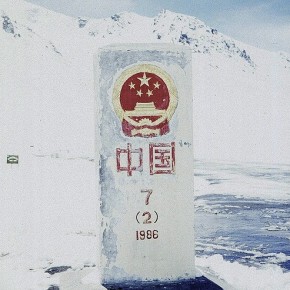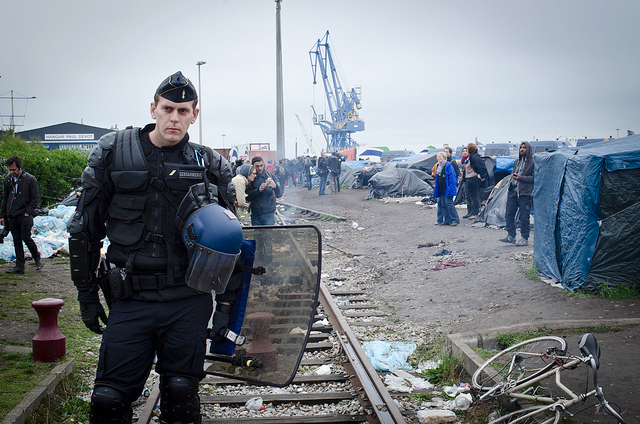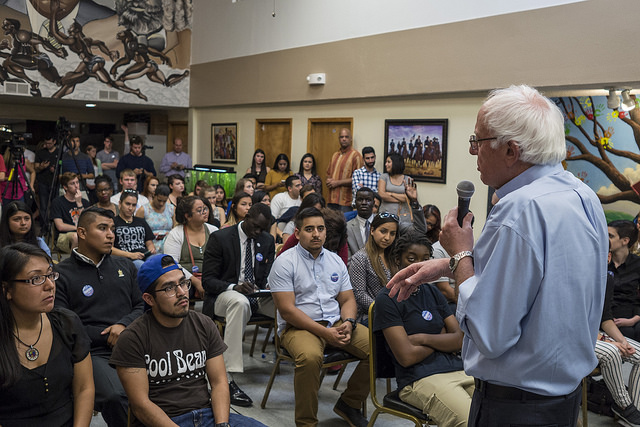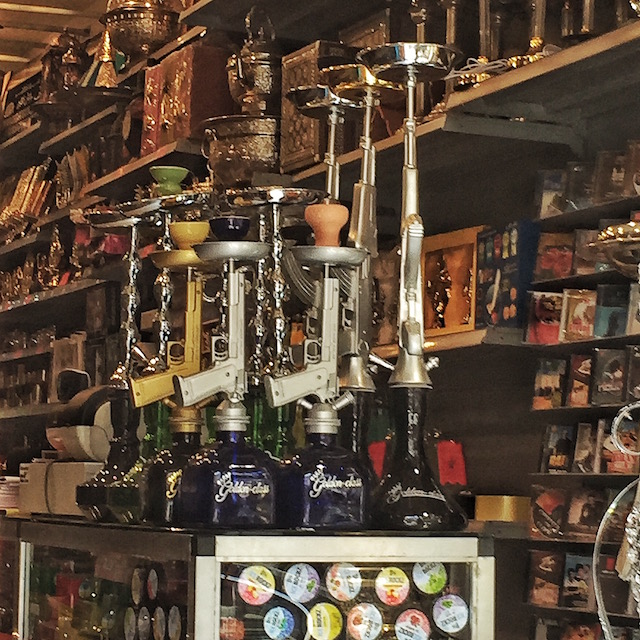I attended the Carnival of Cultures parade Sunday, a much-hyped annual event, meant to highlight local diversity, in Berlin. About halfway through, I spotted a Romani flag on one of the floats: a red wheel on top of blue and green rectangles. It was being waved above a block of jugglers and musicians that were colorful and lively. It troubled me. It wasn’t that I didn’t appreciate its presence. It was necessary.
However, this was one of the only times that I have ever seen an official sign, meant to signify Romani culture, in public. Think of it as though it were a Maltese cross, or a Star of David. If I didn’t have Roma friends, its meaning would have eluded me. The flag served as a stark reminder of how a community with so many similarities to mine (the Romani numerals for one through six are almost exactly the same as in Hindi and Persian) could be so outside my frame of reference. Of course, it isn’t exactly surprising. Roma specificity is culturally unidentifiable to most, except through stereotype.
Being of South Asian heritage, I share ancestry with many Roma. Recent studies have found that the ethnicity can trace its lineage back to North Indian Dalits, or ‘untouchables.’ Of course, we always have to be careful when we discuss genetic origins. It gets especially complex when such talk is laden with class connotations like this, given the persistence of Dalit marginalization, in Europe. As one of my friends said after I joked that Roma are my cousins, “Whatever Romani were, Romani are Europeans now.”
As the performers shuffled by, I thought about what he said. Isn’t there more to being European than just living in Europe? During the Middle Ages, there were many fables about the Roma and their magical powers. These myths persist. I first learned about Roma from reading Holes and watching Buffy The Vampire Slayer, both of which use more pejorative “gypsy curses” as major plot-points. In Europe, such stereotypes are more explicitly politicized, by linking Roma to white, middle class anxieties about drugs, crime, and immigration.
Growing up, though, I was mostly unaware of the latter issues. There was no significant local Roma community in the places I lived. Whether in Canada, Pakistan, or the United Arab Emirates, Roma were always a literary abstraction to me. I came across them in children’s stories, where mysterious old women with crooked noses would read tarot cards. They would always be in traveling circuses, marked off by sun and moon symbols. It all seemed very magical. I was too young to understand that there was a great deal of racism embedded in these narratives. They were more about transcendence than being bogged down in the mire.

Living in Berlin, encountering Roma women on a near-daily basis, begging, primarily, as well as standing at streetlights, offering to wash car windows, does a lot to challenge these sorts of stereotypes. Their lives betray little of the myth and the glamor projected onto them in children’s books, and popular culture. There is nothing especially carefree or whimsical about these women. (Stevie Nix, I’m thinking of you, in particular.) Though Muslims tend to be at the butt-end of most racism in Europe, there is a community immeasurably worse off than we are. Those persons, inarguably, are the Roma. They are, for all intents and purposes, the continent’s untouchables.

Roma are the only minority in Europe that, to varying degrees, remain proactively discriminated against, in terms of government policy, whether they are being segregated in Slovakia, or deported from France. This has been the case for centuries, because as the nation-state emerged, it placed itself in opposition to any group that wasn’t “settled” in a fixed national home. Not all Roma migrate, but many often do it out of necessity, since the six million of them currently living in the European Union are largely excluded from the labor market. There are certainly successful Roma. For instance, many prosperous businesspeople help organize Berlin’s annual Roma Festival in May. Many of its attendees are members of a growing Roma middle class.
My Roma friends point out that the problem is that their marginalization is deeply internalized. When an impoverished group is subjected to centuries worth of economic pressure, and discrimination (antiziganism, as it is called) many of its members begin lashing out in ways that reinforce racist stereotypes, dropping out of school, falling into petty crime. It’s a familiar story, inherent to minority life. Racism is never just an experience of externally-imposed discrimination. Its stereotypes inhere in self-perception, making it that much more difficult to proactively challenge disenfranchisement, and the ways it teaches us to survive.
As I walked home from the parade, I wondered, what, if any responsibilities, Pakistani immigrants like me, have, in Europe, towards other minority communities, like the Roma. Given how much we have in common, culturally, it’s an important question to ask, because the commonalities make one feel a bit more kinship, and care for them, than other minority groups here. It’s a curious question, I think, that tugs at us because, for persons like me, the decision to emigrate to Europe was done out of a desire to improve our lives, by coming here for work, studies, politics, and so on. We did not come here to necessarily make it a better place, or to relieve the suffering of distant ethnic cousins, who have lived here longer.
I cannot help but feel conflicted about the experience. On the one hand, it is because of the dissonance that the recognition of the Roma causes in me. Raised to empathize with the plight of diasporic Muslims, identifying with, a community of similarly South Asian origin, so horribly marginalized, pushes the envelope, in terms of my sense of cultural responsibility. On the other, it also gives me a sense that the path to integration here is a lot more complex, and fraught with obstacles, than simply fighting Islamophobia. Again, the lesson of anti-Semitism is instructive. Fighting racism in Europe is not so much about religion, as it is also about ethnicity. Indeed, it seems increasingly difficult to separate the two here.
Photographs courtesy of Joel Schalit





